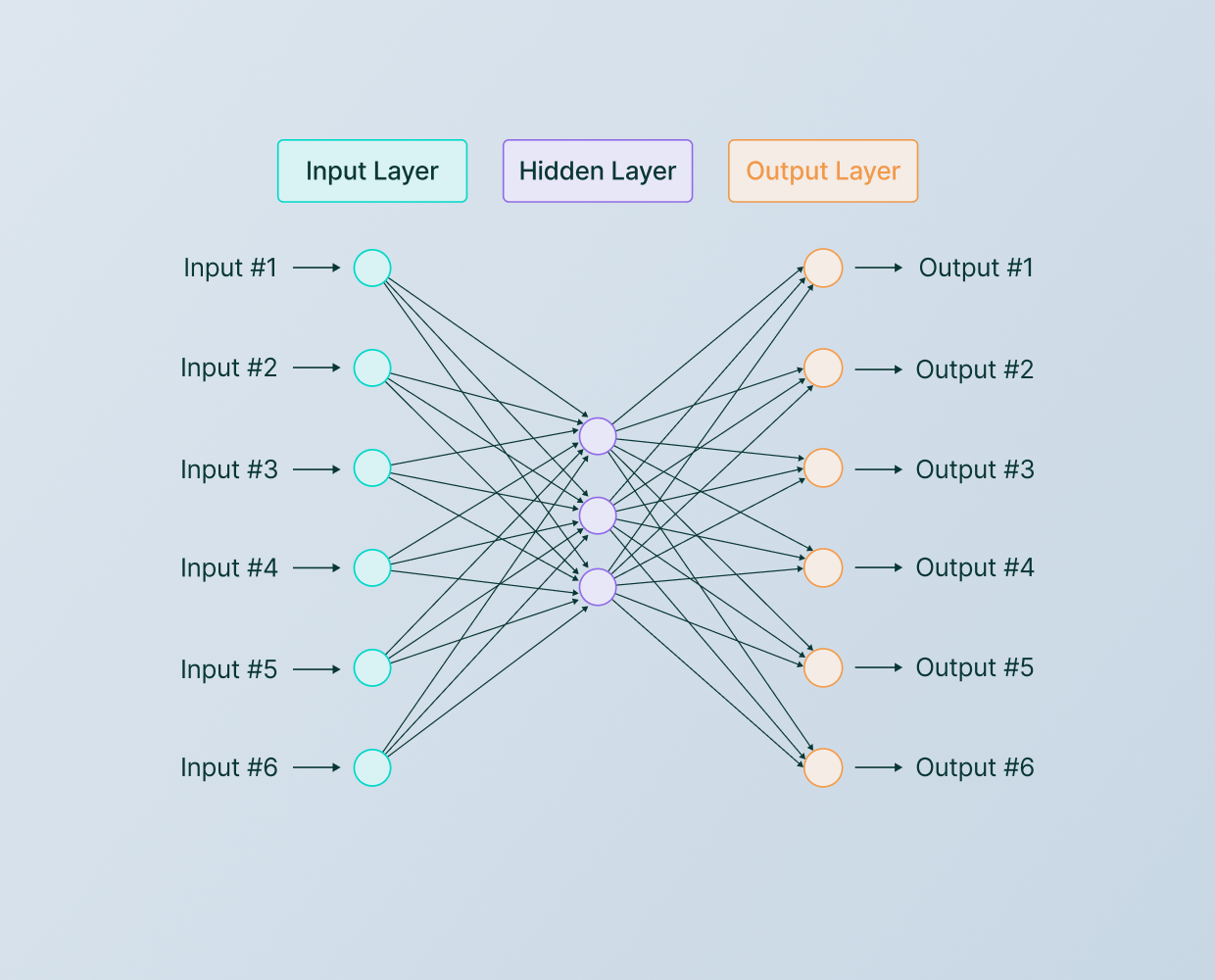A neural network is a computational machine-learning model that follows the structure of the human brain. It consists of networks of interconnected nodes or neurons to process and learn from data, run complex tasks, and arrive at conclusions. It mimics how biological neurons work in a human brain and develops an adaptive system that continuously improves based on past mistakes.
Neural networks can make predictions and learn from data, which is handy in a variety of tasks. They are used in face recognition, speech recognition, autonomous vehicles, handwriting recognition, medical diagnosis, stock market prediction, and chatbots like Gemini and ChatGPT on Android smartphones.
How do neural networks work?
Like a human brain, an artificial neural network is made of artificial neurons: an input layer, one or more hidden layers, and an output layer that work together to learn from data and solve problems. It is identical to human brain cells that send electrical signals to each other to factor in circumstances, weigh possibilities, and arrive at conclusions. The decision-making process is divided into two stages: backpropagation and forward propagation.
Let’s break down the behind-the-scenes neural network structure.
Input layer
The input layer receives data, analyzes it, and passes it to the hidden layers. Weights are assigned after an input layer is fixed. They determine the importance of any given variable to reach the output layer.
Hidden layers
These are the layers between the input and output layers. Each layer in a neural network consists of small individual nodes. These nodes are adaptive and modify themselves as they gather more information. The hidden layer processes the information and passes it to the next layer.
Output layer
It represents the final layer and produces the result based on received inputs. This process is also called forward propagation. The neural network factors in loss calculation, Gradient descent to reduce loss, lower inaccuracy, adjust weight, and trains the model to adapt and learn patterns from the input data. It’s often known as backpropagation.
Types of neural networks
There are several types of neural networks. They differ based on their strengths and use cases. Let’s glance over some of the common types.
Feedforward neural networks
It is the most basic one on the list. Here, the data travels from an input layer to the output layer in a linear direction. Its straightforward approach makes it suitable for facial recognition software. There is also a multilayer perceptron (MLP), which is a type of feedforward neural network with several hidden layers.
Recurrent neural networks (RNNs)
Recurrent neural networks are more complex. Every node in the RNN model functions as a memory cell to remember the information for future use. The system also self-learns and modifies itself to deliver better predictions. Such types of neural networks are used in text-to-speech software solutions.
Convolutional neural network (CNN)
CNN is the most popular model for image processing, object detection, facial recognition, picture classification, and more. It has convolutional layers that learn clues, find other features from input data, and put everything together to recognize the image.
What are neural networks used for?
Neural networks have revolutionized businesses and our daily lives with useful software solutions and next-level artificial intelligence. Here are common use cases for artificial neural networks:
- Fraud detection: Banks, payment providers, and major financial institutes deploy neural networks to auto-delete unusual transactions. These networks use historical data to look for abnormal activities on the server.
- Stock market prediction: Neural networks are used in stock market prediction. They try to predict future trends and help investors make an informed decision.
- Consumer behavior prediction: Marketing companies use neural networks to analyze consumers’ purchase behavior and patterns. Such valuable insights help them create better product strategies and campaigns. E-commerce companies and streaming providers like Netflix also rely on neural networks to recommend products and TV shows tailored to your preferences.
- Diagnosing diseases: Neural networks are used in the healthcare industry. The model can read X-rays or MRIs and assist in diagnosing diseases.
- Facial recognition: Another common use case of neural networks. Neural networks allow facial recognition features on smartphones, security systems, traffic cams, and social media platforms.
- Generative AI: There is no drought of generative AI models. Software solutions like Microsoft Designer and Adobe Firefly use some form of artificial neural networks to generate images, text, music, and more based on prompts.
We barely scratched the surface of neural network applications. They are also crucial for weather predictions, scientific discoveries, and speech recognition on popular voice assistants like Siri, Google Gemini, Alexa, and more.
Difference between a neural network and deep learning
Neural networks and deep learning are often used in the same context. They are related to an extent. The word Deep in deep learning refers to the depth of layers in a neural network. A neural network, which has multiple hidden layers, can also be termed a deep learning algorithm.
Deep learning leverages neural networks with several hidden layers, which are useful in handling complex data. Most generative AI models, NLP (Natural Language Processing) models, and speech recognition software use deep neural networks to predict outcomes.
Understand the basics of AI
Neural networks are a robust tool for tackling a range of problems. As advances are made in artificial intelligence, we expect to see more innovative ideas and use cases for neural networks. Among them, AI apps have taken the market by storm. These chatbots are powerful, fast, and getting better over time. Check our top AI apps and services if you want to take them for a spin.







